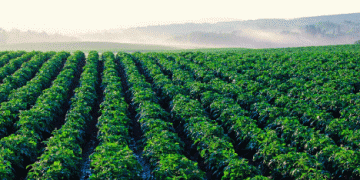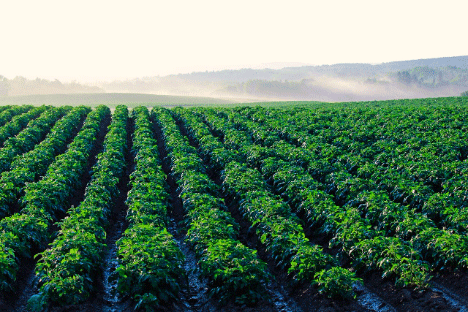The 2024/25 potato season in France is poised to be one of balance, despite facing a series of significant challenges throughout the growing season. According to the National Union of French Potato Producers (UNPT), the average national yield is projected at 45.5 tons per hectare, aligning with the average over the last decade. While this forecast suggests stability, a closer look reveals the substantial difficulties that farmers have had to overcome, including adverse weather conditions and crop health issues.
Delayed Planting and Disease Pressures
One of the major hurdles for the 2024/25 potato season has been the delayed planting, with sowing occurring up to 1.5 months behind schedule due to extended periods of unfavorable weather. Excessive rainfall and low temperatures disrupted planting schedules, particularly in key potato-producing regions such as Nord-Pas-de-Calais and Picardy. This delay not only compressed the growing season but also increased the crop’s vulnerability to diseases like late blight (Phytophthora infestans), which thrives in wet conditions.
The heightened pressure from late blight has necessitated more intensive management strategies, increasing the cost and labor required to protect the crop. Wet conditions also delayed critical field operations, further stressing plants and complicating nutrient uptake. Despite these issues, the industry remains optimistic about maintaining typical yield levels.
Regional Variations in Yield
While the national average is predicted to remain steady, regional differences are likely to play a significant role in overall production outcomes. The timing of planting, varietal choice, and localized weather patterns will lead to variations in yields. Regions that managed to avoid prolonged wet conditions or were able to mitigate disease pressures early on are expected to perform closer to the upper range of yield predictions.
Conversely, areas that were hardest hit by delayed planting and wet weather could see lower than average returns, particularly if disease pressures were not effectively managed. Varietal performance also plays a key role, as certain potato varieties are more resilient to wet conditions and late planting, whereas others may struggle.
Market and Pricing Outlook
The UNPT expects that potato supply will meet market demand for the 2024/25 season, helping to stabilize prices. While delayed planting and disease have created challenges, the overall production levels should support the French potato market’s competitiveness on both domestic and international fronts.
One crucial factor still under evaluation is the quality of the harvest, particularly regarding traits such as washability, dry matter content, and tuber size. These characteristics are essential in determining the market value of the crop, especially for export markets that demand high-quality potatoes for fresh consumption or processing.
Given that the 2024/25 season started with unfavorable conditions, there may be concerns about quality variability, particularly in regions that experienced higher disease pressure. If quality issues emerge, this could impact the pricing structure and market dynamics. However, if quality meets expectations, producers should be well-positioned to capture competitive prices, both in the domestic and export markets.
The French potato industry has demonstrated resilience in the face of adverse climatic and disease pressures during the 2024/25 season. With a projected yield of 45.5 tons per hectare, the sector remains optimistic about maintaining a balanced supply and competitive pricing. However, the true test of the season will come in evaluating the final quality of the crop, which could influence market performance. As the season progresses, continued monitoring of disease pressures and weather patterns will be critical to safeguarding yields and ensuring a successful harvest.
































